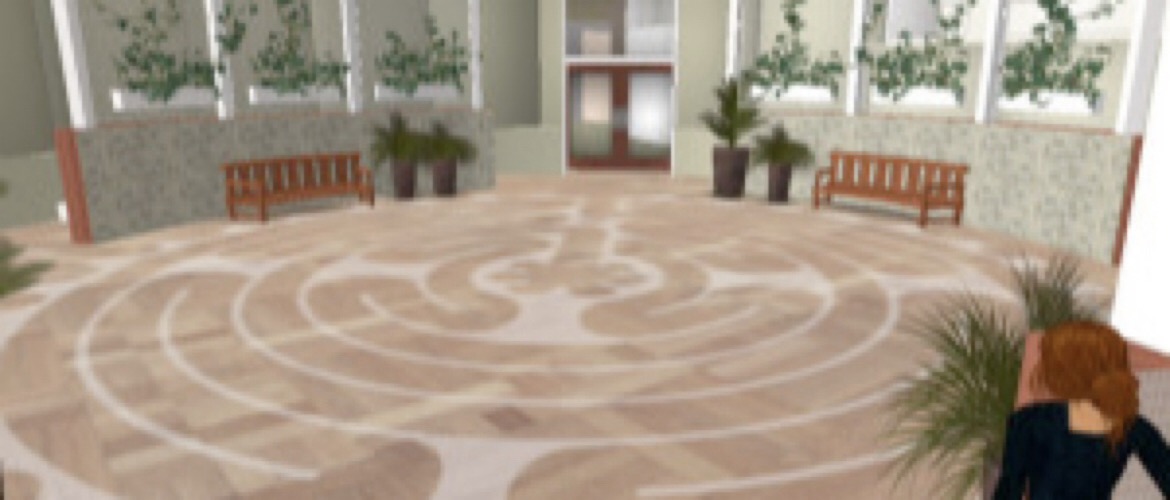 Your likes, your dislikes, your hopes and dreams…all things you’d share with your spouse or significant other.
Your likes, your dislikes, your hopes and dreams…all things you’d share with your spouse or significant other.
And, if you’re lucky enough to afford one, an interior decorator.
How else can she spruce up that living room, bedroom, or family room without knowing whether you prefer warm or cool colors; causal or formal dining; and cabernet or scotch and soda?
If you understand this then you understand the hottest technology that’s poking into stores, doors, and alleys all over town: Augmented Reality or AR.
Quit yawning.
AR is the driving force behind Pokémon Go, and if I have to explain what that’s all about, well, that yawn is you waking up from a 20-year nap. Van Winkles, meet AR, the Hula Hoop of 2016.
We’d hardly consider an interior designer’s suggestion that she hang up ads in our living rooms in exchange for her services. But with some readily-available data on you collected during your travels around the internet, AR applications can show you a reality tailored to your desires.
Augmented Reality is the cousin of VR, or Virtual Reality, according to Dr. Jacki Morie, founder and president of All These Worlds, a company that develops AR applications. “Virtual reality tends to separate you from the real world. With augmented reality you still see your surroundings, your friends, everything around you, but there are extra details—images, animated objects, and text—put into your world by a computer program.”
Think of AR as an exterior decorator that spruces up, but doesn’t subsume, the space around you.
Like interior decorators, AR exterior decorators need to know a little about you to do their jobs.
“Your phone, which is the computer, knows where you are and what you’re looking at because it has a camera and a GPS,” Morie said. Your comings and goings are necessary information for exterior designers who have already figured out what your location needs.
“Based on what is, or should be, in front of you, the AR application shows you whatever data should be overlaid at that spot,“ Morie said, ”whether that’s skin on the skeleton of a Tyrannosaurus rex in the Museum of the Rockies or a Pokémon character on top of the steps of a fountain in Central Park.“
Unlike interior decorators, exterior decorators don’t charge up front fees. They collect their money on the back end, by selling the information you’ve traded for what appears to be free services.
If you detect a note of cynicism in the previous paragraph, please read it again. It’s not a note. It’s a whole symphony.
While Facebook and Twitter collect personal data to help finance their businesses, neither one needs to know where you are and what you see in order to post your updates or tweets. AR applications can’t function without that knowledge.
And where there’s personal data there’s temptation.
“What’s happening with all kinds of social media is that people are flocking to it, they’re using it, they’re not thinking about the ramifications of all of the data being available to both the purveyor of that social media application and other entities that might want to use that data,” Morie said.
An interior decorator who sold personal secrets to the highest bidder, however discretely, would likely be run out of the business. An exterior decorator who does the same hardly merits a second glance.
“The data are being collected for commerce,” Morie said, “and we all seem to be okay with that.” But are we okay with it when that data finds itself on the auction block?
“As soon as somebody wants to tap into those circuits of what these social systems know about you they can customize anything,” Morie said.
We’d hardly consider an interior designer’s suggestion that she hang up ads in our living rooms in exchange for her services. But with some readily-available data on you collected during your travels around the internet, AR applications can show you a reality tailored to your desires.
And we seem to be increasingly tolerant of these commercially-customized spaces outside our homes.
“Look at that scene in Minority Report where John Anderton is walking down the street and billboards are scanning his retinas and showing him ads advertisers think he wants to see? It’s going to be just like that,” Morie said. “I think we’re in very rare territory here. We’ve never had this amount of surveillance on ordinary people before.”
All of which makes me wonder if interior decorators’ jobs are on the line along with our privacy. Maybe all our living rooms need are a few basic IKEA pieces, enough smartphones to hand out to family and visitors, and an AR interior decorator. Then each person can see a room tailored to his or her heart’s desire.
Right down to Game of Thrones curtains on the windows and a Chivas Regal color scheme on the walls.
Start your Sunday with a laugh. Read the Sunday Funnies, fresh humor from The Out Of My Mind Blog. Subscribe now and you'll never miss a post.
Dr. Jacquelyn Ford (Jacki) Morie has built her career around advancing technology to create meaningful, healthful, and joy-giving experiences. Over the past 25 years she has developed multi-sensory techniques for virtual reality (VR) that can predictably elicit emotional responses from participants, including a scent collar that can deliver custom scents to a participant in VR. She has worked extensively with smart avatars and was a principle investigator on the NSF-funded project Virtual Girl Guides—life-sized twin conversational avatars that were installed at the Boston Museum of Science from 2009 – 2012. With her company All These Worlds, LLC, she is using her VR techniques to expand the capabilities of 3D virtual worlds (social VR) to provide stress relief for soldiers with online Mindfulness classes, and is working on a NASA-funded virtual world eco-system for future Mars-bound astronauts who need support to endure long separations from family and Earth. She is also involved in multiple start-up projects that apply Augmented Reality technology to the fields of commerce, education, and entertainment.
Mind Doodle…
If you’re a football fan, a friend of a football fan or, worse, the spouse of a football fan, you were way ahead of the curve when it came to Augmented Reality. That yellow line in TV broadcasts, the one that marks the first down, is an early result of AR technology. Working with a 3-D model of the stadium, and camera sensors that report each camera’s location and viewing angle, computer software generates and draws the yellow line. The nice thing about this AR application is that no football stadium has ever sued for invasion of privacy.

Great article Jay. So this is why I can’t get Pokeman Go out of the hands or minds of my grandsons, or my son, or daughter or friends. Damn.
Hi Nick…
Thanks. Glad you found the story useful.
I often wonder what’s going to happen to today’s teens and 20-somethings when the data collected now catches up with them in their 40s. One possibility is that it will be very embarrassing. The other is that we’ll have millions of Bill Clinton moments*, where people realize that if culturally-sanctioned indiscretions are held against people nobody will get hired for everything.
— jay
*I’m talking here about the realization that we could no longer ban presidential candidates who smoked marijuana. Otherwise our choices would come down to a piddling few, most of whom would go to bed around 10PM and insist on waltzes being played at state dinners.
Amazing analysis of Pokeman Go and AR and its invasion into our privacy.
Hi Dick…
Thanks. Much of the credit goes to Jacki Morie who’s been working in the VR/AR field for years. Among her other goals, she wants to bring (or keep) humanity to the alternative worlds she’s creating.
— jay